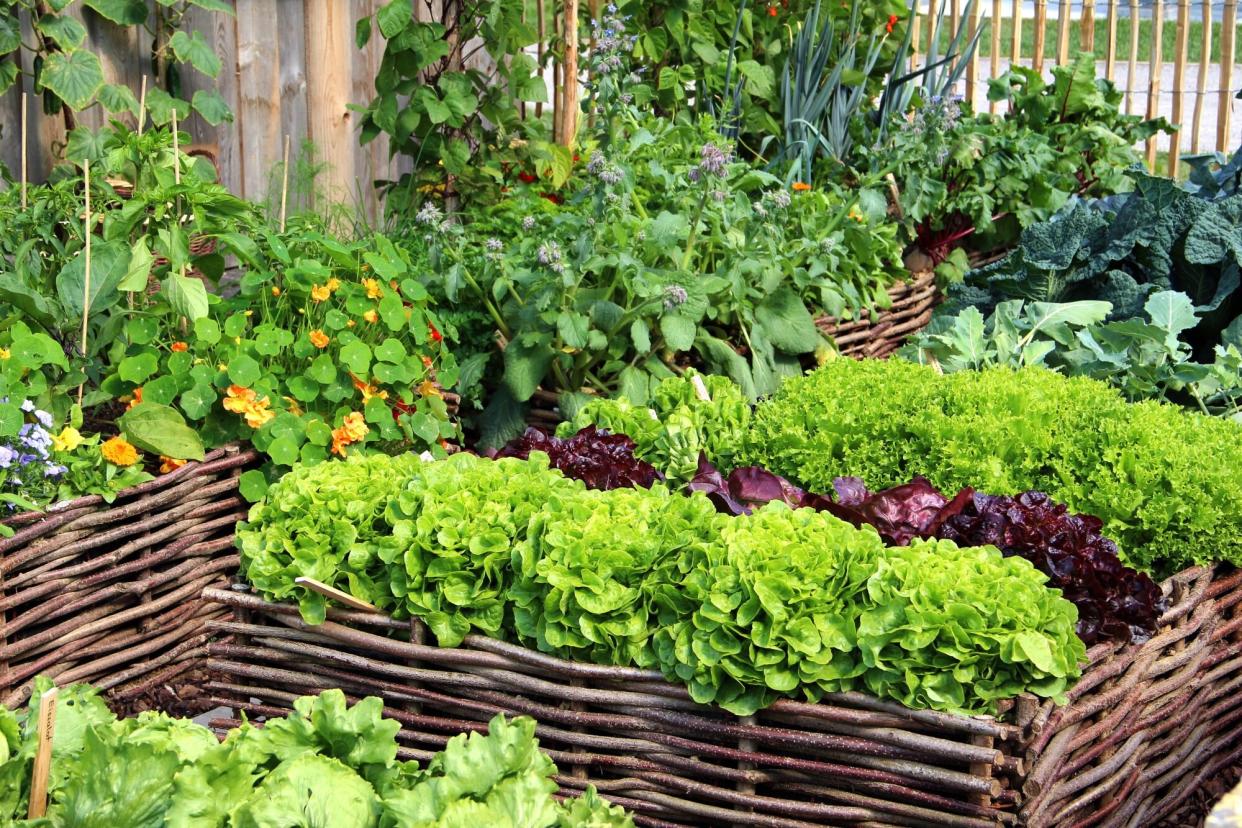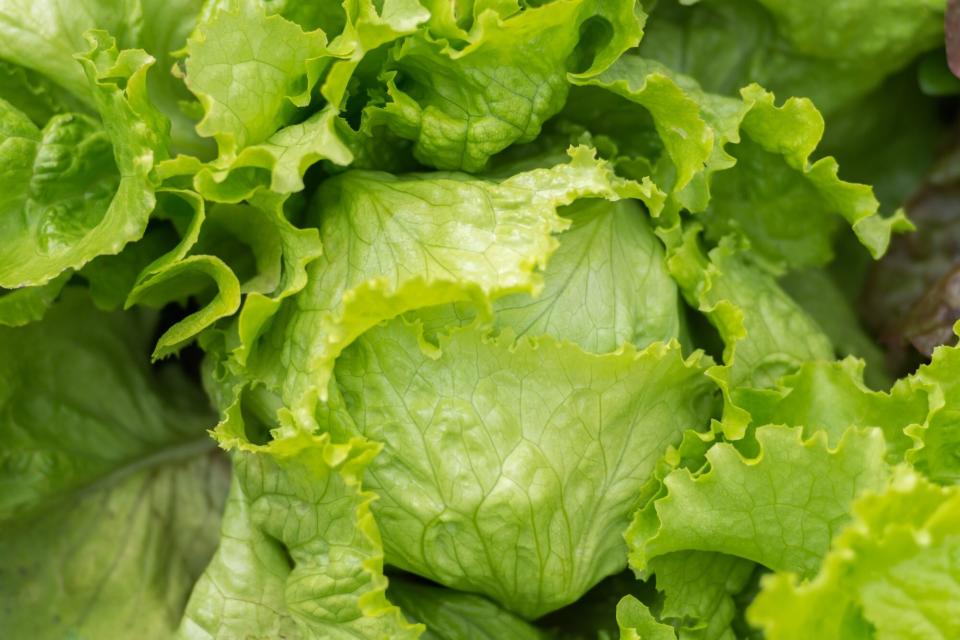5 Easy-to-Grow Lettuce Varieties to Plant in Your Garden—and How to Care for Each

Getty Images / fotolinchen
Lettuce is arguably one of the more versatile edible vegetables you can grow in your garden. From gorgeous salads to green smoothies to fixings for burgers and deli-style sandwiches, lettuce lends a dose of tasty crunch and nutritional value to many garden-to-table meals. Having some growing at all times will ensure you're keeping this healthy, leafy vegetable in your dietary rotation.
Whether you're new to growing lettuce or you're seeking a few more options to add to your already thriving garden, try your green thumb on one of these easy-to-grow varieties.
Related: The 6 Most High-Yielding Fruits and Vegetables to Plant in Your Culinary Garden

Getty Images / PhotoAlto/Laurence Mouton
Monte Carlo Romaine
Because it grows in compact, vertical stalks, romaine lettuce is an excellent choice for small plots or indoor gardening. There are a handful of varieties to choose from, with the dark Monte Carlo being a choice favorite for its mild flavor and zesty crunch.
"It is a compact romaine variety that is by far the best variety for sandwiches. The uniform leaves are the perfect size for a slice of bread," says Angelo Kelvakis, master horticulturist for Rise Gardens. "It's very easy to grow and great for square foot or indoor gardening, as it does not get as large as other varieties of romaine."
Care Requirements
This is a very hands-off head lettuce that better tolerates heat compared to other varieties. Still, Kelvakis recommends keeping temperatures below 80 degrees for the happiest possible plant. It prefers about four to six hours of direct sunlight a day, though it can grow in partial shade, and matures in 50 to 60 days.
Clip individual outer leaves as needed, or harvest the full head once it's about 4 to 7 inches tall. Make sure to preserve the base so it regrows, which it tends to do every two to three weeks during the growing season.

Getty Images / Zoya2222
Parris Island Romaine
Another romaine variety to consider is Parris Island, which has a slightly sweeter taste and tends to be more disease-resistant. It offers a mild, buttery flavor and nice crunch, making it ideal for sandwiches and gourmet salads.
"It's an excellent choice as a companion lettuce plant to other varieties, as you will enjoy successful harvests when planted together," says Jen McDonald, certified organic vegetable garden specialist and co-founder of The Garden Girls in Houston, Texas.
Care Requirements
You can plant your Parris Island romaine lettuce in raised beds for easy harvesting and either keep them there through the season or transplant once they've matured. It prefers full sun to partial shade, and thrives in temperatures between 60 and 70 degrees.
The plant reaches maturity between 60 and 80 days after planting and tops out around 12 inches. You can harvest the outer leaves as needed, or the full head once it's mature. Again, remember to leave the base intact so you can harvest again in the coming weeks.
Related: How to Buy, Store, and Wash Lettuce and All Kinds of Salad Greens

Getty Images / Svetlana Popova
Crispino Iceberg
A classic iceberg lettuce is an excellent choice for any garden for its adaptability and versatility. It produces a medium-sized, firm head and makes for scrumptious salads, wraps, and sandwiches. Iceberg lettuce can also be shredded for tacos or served as a wedge salad thanks to its tightly compact head.
"This variety grows one of the best folded heads of iceberg lettuce I have seen when it is transplanted into a garden instead of directly seeded," notes Kelvakis. "With a little more work from transplanting, you will get a classic white interior and a soft green outer leaf."
Care Requirements
This variety tends to perform best indoors in a hydroponic system where temperatures are consistent and you can watch your head form, notes Kelvakis. If you are growing outside, it's best to stick to the beginning and end of the season, when temperatures are around 60 to 65 degrees. Crispino iceberg reaches maturity in 50 to 60 days; it's best to harvest the full head.

Getty Images / Anna Mardo
Buttercrunch
While iceberg and romaine lettuces deliver a hearty crunch in every bite, sometimes you crave a lettuce with a slightly softer texture. Cue the buttercrunch, which is known for its velvety texture and buttery taste. This variety produces large, strong leaves that are especially popular for healthy lettuce wraps, though it's also a great option for salads and sandwiches, too.
Care Requirements
Buttercrunch prefers full sun, and requires cool temperatures—ideally between 45 and 70 degrees—since it can become bitter if temperatures get too high. However, you can get an indoor start if temperatures aren't quite right outside.
"Butterhead is satisfying to grow and can be ready to harvest in 28 days, while other types [of lettuce] take up to 70 days," says McDonald. Harvest once the heads are firm and about six to eight inches in diameter, leaving the base intact so you can re-harvest again.

Getty Images / Copit
Red Oakleaf
Add a gourmet twist to your garden with red oakleaf lettuce, which boasts crimson-colored foliage and a dense, oak-shaped leaf. The flavor might just outshine its gorgeous appearance, though: It's mellow with a slightly nutty, sweet taste.
"This is a specialty variety that was designed with harvesting in mind. It can be harvested as a leaf lettuce or a head lettuce because it produces uniform leaves," says Kelvakis. "This makes for wonderful salads with perfect bites, and the deep reds it produces make this plant beautiful."
Care Requirements
Oakleaf lettuce prefers full sun and temperatures between 60 and 65 degrees. It typically reaches maturity around 40 to 60 days after germination, and you can harvest the individual leaves throughout the growth cycle as needed.
As Kelvakis mentioned, you can also harvest the full head if you require more of the plant for your meal. Either way, he recommends continually pruning off the older foliage as the head grows to keep the plant healthy.

